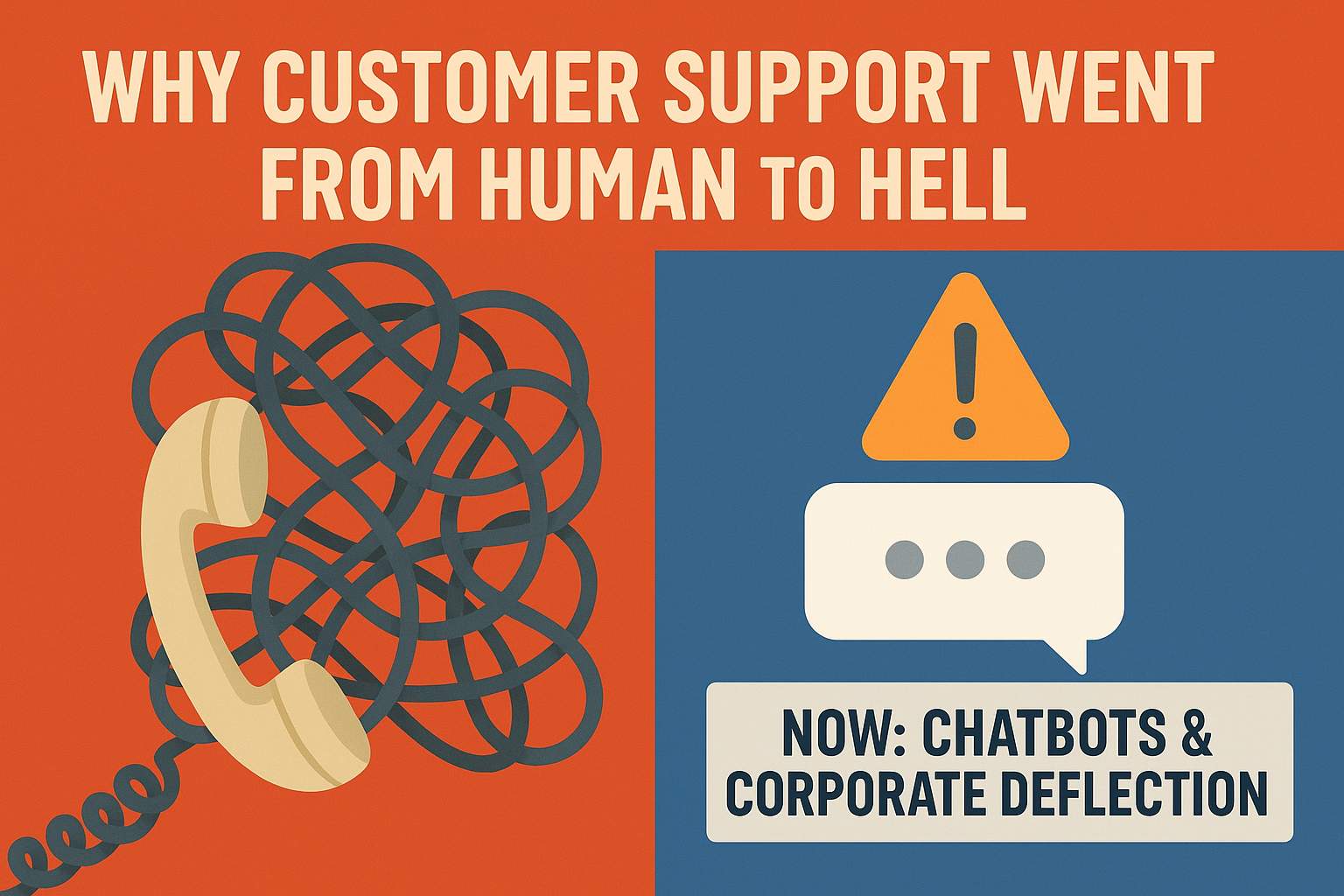
Why Customer Support Went from Human to Hell
Remember when customer service meant talking to an actual human?
You’d call, maybe wait a few minutes, press “0” for an operator, and you’d get a person who could help you right then and there.
Those days are gone — and it’s not an accident.
How It Started: The Age of the Phone Tree
In the 80s and 90s, businesses discovered Interactive Voice Response (IVR) systems — the endless menus that say things like, “Press 1 for billing…”
At first, they were a tool to organize calls. But over time, companies realized they were also a great way to slow you down.
The longer you spend pressing buttons, the fewer humans they need to hire.
Then Came the Hold Music Trap
By the 2000s, hold times weren’t just a side effect — they became part of the strategy.
Every minute you’re stuck listening to “Your call is very important to us” is another chance you’ll hang up.
The goal? Reduce the number of calls that ever reach a person.
Now: Chatbots & Corporate Deflection
In the 2010s and 2020s, chatbots took over.
They’re not there to solve your problem — they’re there to deflect you, frustrate you, and keep you from reaching anyone who can actually help.
Why? Because executives know every issue that gets solved costs money. If they can make you give up, they save it.
The Result: Customer Support Hell
You repeat your story five times to different “agents.”
Your support ticket disappears into a black hole.
You get told, “Sorry, it’s policy.”
It’s not broken by accident — it’s working exactly as designed.
The Way Out
The old trick was pressing “0” to bypass the nonsense.
That’s gone. But we’ve built the new version: DearCEO.wtf.
We take your complaint straight to the executives who have the authority to actually fix things — no phone tree, no chatbot, no scripted apology.
Skip the bots. Email the execs. → DearCEO.wtf
Ready to get a real response
- Respectful escalation email
- Right executive inbox
- You send it. You stay in control